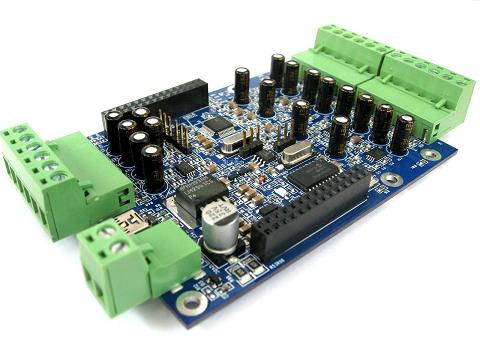
I’ve been reading a bit about the use of multiple subwoofers to improve bass response and/or to reduce spatial variation in the response. In particular, the paper “Low-Frequency Optimization Using Multiple Subwoofers” by Todd Welti and Allan Devantier shows how placement of multiple subwoofers can be used to optimize response or spatial variation. They document the results from running a search algorithm over a multi-dimensional space defined by:
- The particular combination of subwoofers selected (two or four out of eight, in the most interesting part of the paper)
- The gain of each subwoofer
- The delay of each subwoofer
- The frequency and cut of a single parametric filter on each subwoofer
The response of each subwoofer is not simulated – that part is real. That is, they measured the response of each of the subwoofer locations, at each of a set of listening positions. All of this done in a real room.
The results of their search algorithm selected the optimum subwoofer locations (out of the eight measured), and the parameters of each of those subwoofers. Now, if you look at those parameters – gain, delay, and parametric filter – what are you reminded of? A miniDSP!! One channel in, four channels out, each with gain, delay, and parametric equalisation.
Crikey.
So what that means to me is that with the miniDSP, we have the perfect tool for optimizing multi-channel subwoofer systems. All we need is one miniDSP card in a box, with an input jack, four output jacks, and a pot for overall volume control. On the card, we run the 4-way crossover plugin. We don’t actually use it as a crossover – we set the highpass and lowpass filters appropriate to subwoofers. They may all be the same, or we may vary the filter points as needed – whatever works to get the best in-room response.
It gets even better than that, actually. The miniDSP folks have just recently released a balanced version of the miniDSP. Since we may have long cable runs to the subwoofer amps, and/or be using high-power pro amps that usually have balanced inputs, this card seems like the logical choice for this application.

For the subs themselves, I’m going to experiment with two different options. One is a set of sealed subs. The other is a set of dipole subs, which I find the most interesting option. I’ll be writing up more about each of these as I build them and perform measurements.
Now, what we don’t have is the algorithm used by Welti and Devantier. That is, I believe, the subject of patents by Harman International. But there’s nothing to stop us from taking a heuristic and informed approach to solving the problem of optimizing in-room response. I’ll write up the proposal for that in the next blog article.